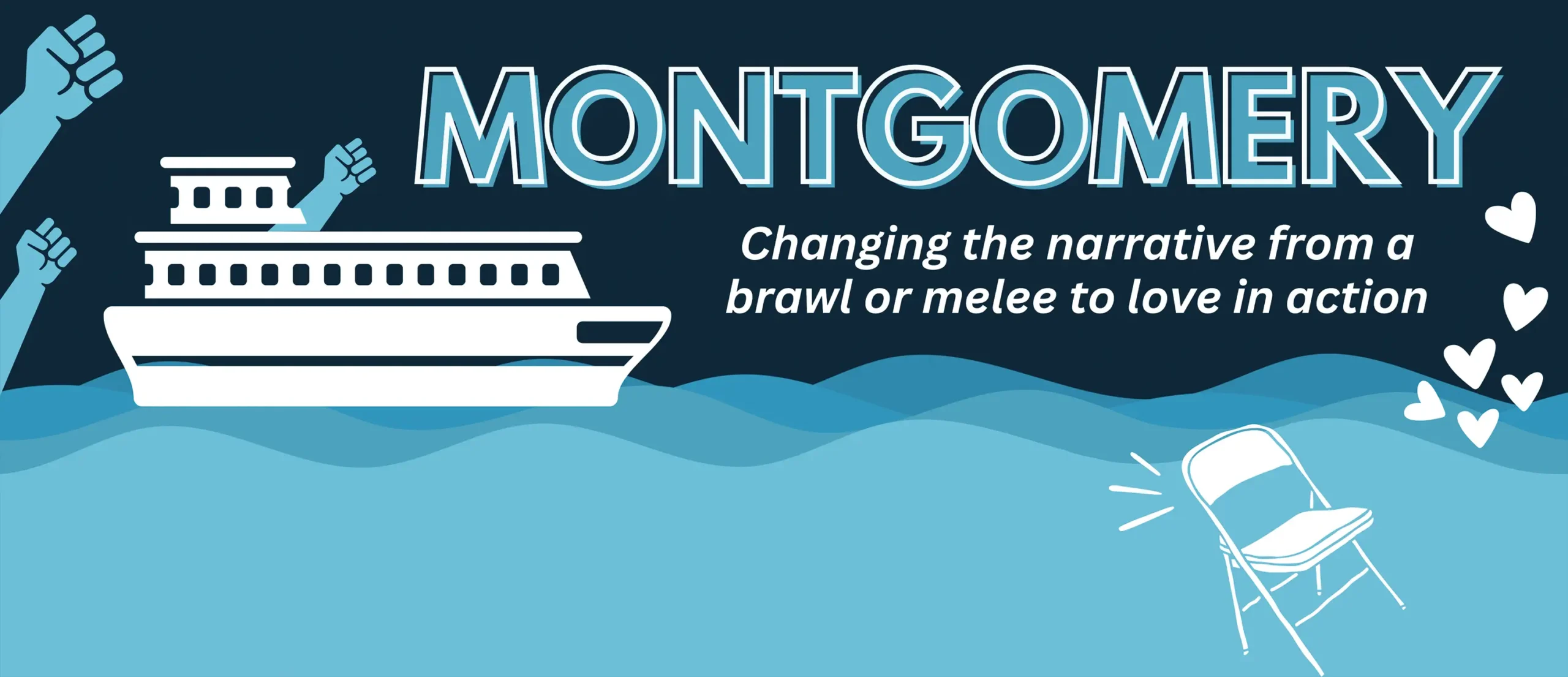

Dubbed the “Montgomery Riverfront Brawl” and “Montgomery Melee,” it started when a group of white, rowdy boaters failed to move their illegally docked pontoon boat for the return of Harriot II, a riverboat dinner cruise, on the Alabama River. When the black dock worker attempted to move the pontoon boat after approximately 45 minutes of repeated requests, he was attacked by the boaters. CNN reported that racial epithets were used, and witnesses believed alcohol may have played a factor.
However, no one is disputing that this incident could have been avoided. “They just didn’t think the rules applied to them. It was so avoidable. This never had to have happened,” a witness, Leslie Mawhorter, 52, who was aboard the Harriott II, said in an interview.
“What was hard is we were all on the boat and witnessing our poor crewman being attacked by these guys, and we couldn’t do anything about it,” Christa Owen, 47, said. “It was really difficult to watch, and, like I said, we felt helpless because we were forced to be spectators.”
Montgomery Mayor Steven L. Reed said, “The Montgomery Police Department acted swiftly to detain several reckless individuals for attacking a man who was doing his job.”
“It was just absolutely unnecessary and uncalled for,” Alabama Gov. Kay Ivey said.
During the Conscience & Justice Council virtual broadcast titled, “Montgomery: Brawling Democracy,” Kelli Dulan, social justice advocate and Alabama native, changed the narrative from a brawl or melee to love in action. Instead of targeting the evil displayed in words and unprovoked violent assault, Dulan focused on how the community came to the aid of the defenseless dock worker. From a 16-year-old white colleague to the one dubbed “JaMichael Phelps” to those who recorded video to provide police evidence, people were motivated by love to support the dock worker and ensure justice was served.
Against the historical backdrop of the Montgomery Bus Boycott nearly 70 years ago and the Selma to Montgomery march for voting rights almost 60 years ago, Alabama’s capital city hosts the Rosa Parks Museum, Legacy Museum: From Slavery to Mass Incarceration, and the National Memorial for Peace and Justice as a reminder of the atrocities of injustice. It’s also the state’s epicenter for sustaining racial gerrymandering, questioning the truth about systemic and structural racism, and silencing the realities of white privilege fragility that resonates in America and the church, even in the Bible Belt.
In Dr. Martin Luther King, Jr.’s “Our God is Marching On” speech, which he shared to kick off the Montgomery Bus Boycott, he said, “We are determined here in Montgomery to work and fight until justice runs ‘down like water, and righteousness like a mighty stream.’” In protesting the right to vote at the state Capitol in Montgomery, Dr. King proclaimed, “We must come to see that the end we see is a society at peace with itself, a society that can live with its conscience.”
As a takeaway from this incident in Montgomery, we witnessed the words of Dr. King as love in action. We saw where people seemed more concerned about protecting a defenseless man and seeing perpetrators brought to justice. That’s a lesson for America and also the church.